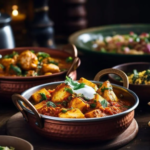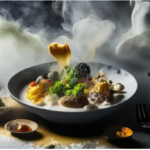Outdoor flood light fixtures play a crucial role in enhancing your home’s safety and aesthetics. Whether you’re illuminating a pathway, spotlighting architectural features, or deterring intruders, choosing the right flood light fixture is essential for achieving your desired results. This comprehensive guide will help you navigate the various aspects of outdoor flood light fixtures, ensuring you make an informed decision.
Understanding Outdoor Flood Light Fixtures
Outdoor flood light fixtures are designed to provide broad, intense light over a large area. They are typically mounted on walls, posts, or ceilings and are used for various purposes, including security, landscape lighting, and general illumination. Based on their light sources, design, and functionalities, flood lights can be classified into several types.
Types of Outdoor Flood Light Fixtures
Incandescent Flood Lights
Incandescent flood lights are the traditional choice, offering warm, natural light. They are relatively inexpensive but are not very energy-efficient and have a shorter lifespan compared to newer technologies. These fixtures are best suited for areas where warm light is preferred and where energy costs are not a major concern.
Halogen Flood Lights
Halogen flood lights are a more energy-efficient option compared to incandescent bulbs. They provide a brighter and whiter light and have a longer lifespan. However, they can still consume more power than LED options. Halogen lights are suitable for areas requiring bright, clear light and where energy efficiency is a moderate concern.
LED Flood Lights
LED flood lights are the most energy-efficient and long-lasting option available. They consume significantly less power than incandescent and halogen lights and offer a wide range of color temperatures. Although the initial cost is higher, their longevity and low energy consumption make them a cost-effective choice in the long run. LED flood lights are ideal for those looking to minimize energy usage and maintenance.
Metal Halide Flood Lights
Due to their high intensity and brightness, metal halide floodlights are often used in commercial settings and sports fields. They are not as energy-efficient as LEDs but offer excellent light quality and coverage. These lights are suitable for large areas where high-intensity lighting is necessary.
Key Features to Consider
Brightness and Lumen Output
Brightness is a crucial factor when selecting flood light fixtures. It is measured in lumens, with higher lumen output providing brighter light. Consider the purpose of your flood lights: for security, a higher lumen output is beneficial to ensure the area is well-lit. For decorative purposes, lower lumen output may suffice.
Cost
When evaluating the outdoor flood light fixtures cost, it’s crucial to factor in both initial and long-term expenses. High-quality fixtures may have a higher upfront cost but often offer better durability and energy efficiency, reducing future maintenance and electricity bills. Comparing different models and their features can help you find the best balance between performance and cost.
Color Temperature
Color temperature, measured in Kelvin (K), affects the light’s appearance. Lower Kelvin values (2700K-3000K) produce warm, yellow light, while higher values (4000K-6000K) produce cool, white to bluish light. Choose a color temperature that complements the aesthetics of your outdoor space and meets your lighting needs.
Beam Angle
The beam angle of a flood light determines how wide or narrow the light coverage will be. A wider beam angle is ideal for covering large areas such as driveways or yards, while a narrower beam angle is better suited for focusing on specific features or areas.
Durability and Weather Resistance
Outdoor flood light fixtures must be durable and weather-resistant to withstand various environmental conditions. Look for fixtures made from high-quality materials such as aluminium or stainless steel. Ensure they have a high IP (Ingress Protection) rating to resist water and dust ingress.
Adjustability and Mounting Options
Consider whether the flood light fixture offers adjustable features. Some models come with swivel or tilting capabilities, allowing you to direct the light where needed. Also, check the mounting options to ensure compatibility with your installation site, whether it’s a wall, pole, or ceiling mount.
Energy Efficiency and Environmental Impact
Energy efficiency is an important consideration for reducing both your energy bills and environmental impact. LED floodlights stand out in this regard, offering significant energy savings and a longer lifespan. When choosing flood lights, opt for energy-efficient models and consider those with certifications such as Energy Star.
Installation and Maintenance
Proper installation and maintenance are key to ensuring the longevity and performance of your flood light fixtures. If you’re comfortable with DIY projects, you can install the fixtures yourself following the manufacturer’s instructions. However, for complex installations, it’s advisable to hire a professional electrician.
Regular maintenance involves checking for any signs of damage, cleaning the fixtures, and replacing bulbs as needed. Maintenance is minimal for LED floodlights due to their long lifespan.
Conclusion
Choosing the right outdoor flood light fixture involves considering factors such as light type, brightness, color temperature, and durability. By understanding these aspects and aligning them with your specific needs, you can enhance the safety, functionality, and beauty of your outdoor spaces. Whether you prioritize energy efficiency, bright illumination, or aesthetic appeal, this comprehensive guide will help you make an informed decision and select the perfect flood light fixtures for your home.




















